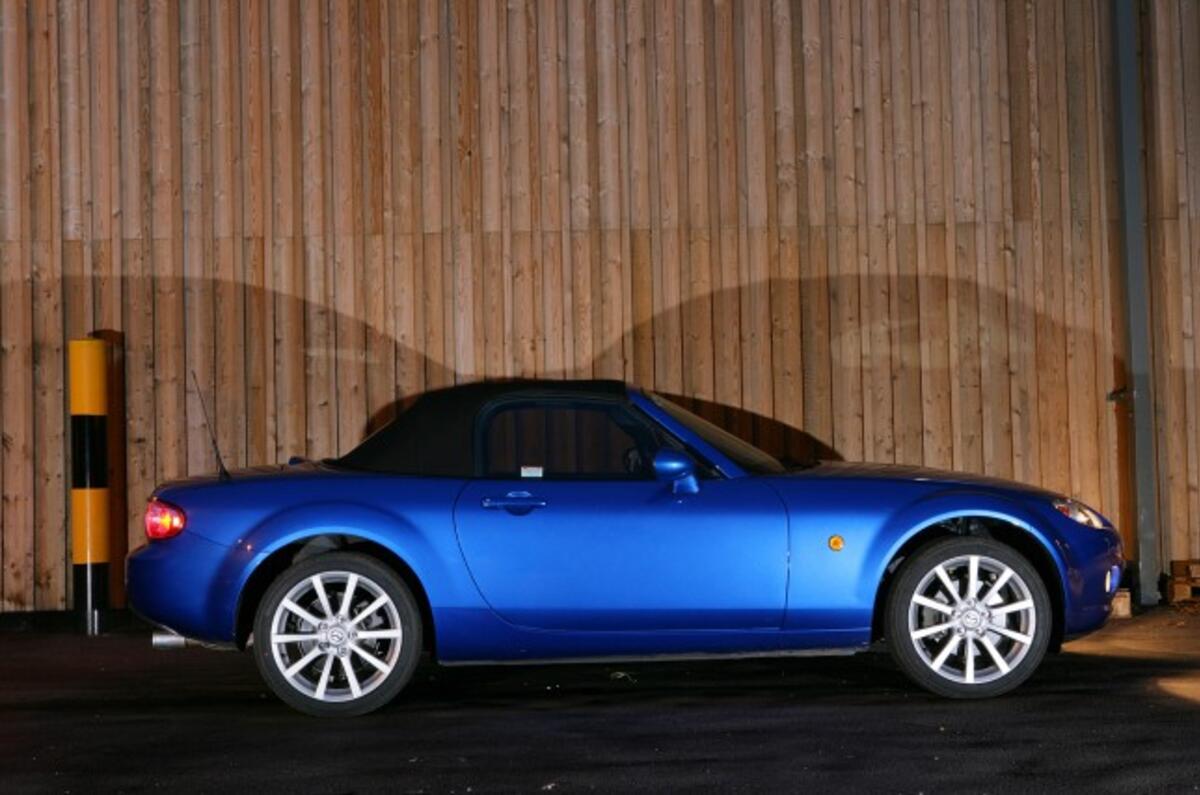Few announcements in recent years have puzzled me quite as much as the one made by Mazda in May 2012.
The next Mazda MX-5, due in 2015, would be co-developed with Fiat, spawning a Japanese-built Alfa Romeo sister version with its own styling and engines. Was the market’s pre-eminent power in affordable rear-driven fun really giving away the family jewels? Was one of the most distinctive driver’s cars in the world really to be cloned?
Interviews with several Mazda high-ups at the Frankfurt motor show yesterday presented the chance to ask some obvious questions. First to supply the answers was Mazda chairman Takashi Yamanouchi – surely a man without whose support the deal couldn’t have happened.
I asked if the agreement had anything to do with the fairly dire straights the Japanese manufacturer had been in at the end of the last decade, and whether Yamanouchi would take the same decision again, now that things are looking brighter?
His answer, delivered with an entirely straight face, surprised me. “I would,” he said. “We are a small, independent car-maker; it’s important for us to foster wider links with others and to cultivate relationships like this. I am happy with the deal with Fiat. I’m sure Mr Marchionne is also very happy.” That last line came with a smirk that suggested the man well knew the value of what Mazda was – is – giving away here.
Except that nothing is actually being given away. “We expect to make good profit from all of our new models. The MX-5 can be no different,” Yamanouchi went on. He wouldn’t say exactly how much of the up-front project investment Fiat has supplied, but Mazda’s the one with the rear-drive knowhow and the factory where the cars will be built, so you might reasonably expect Fiat to be holding its end up with the cheque book.
A later conversation with another company veteran more or less confirmed as much: “It’s a deal that’s making a lot of money for the company,” he said. It’d have to be.
There was, of course, another deal just like it not-so-long ago, spawning a pair of affordable rear-drivers also built in Japan, where one partner allegedly brought most of the finance and the other most of the technical expertise. The Toyobaru has been a hit for Toyota and Subaru both critically and in sales terms, so why wouldn’t the likes of Mazda and Fiat seek to emulate it?
Because it’s selling out, isn’t it? That’s what it looks like. It’s taking Granny’s engagement ring off your other half’s finger and swapping it in at the pawn-brokers for rent money. And I still can’t quite wrap my head around Mazda’s talismanic little sports car being used as a cash cow, or having its enduring distinctiveness eroded – even if it is only by the unswervable realities of modern-day car making.
I’m glad we’re getting a new one, don’t get me wrong - and I’m glad it’ll be as affordable as we’re used to. But I don’t like the idea that it’s being defined in any way by an Alfa Romeo – whether that’s directly or indirectly, and in opposition to, or as a complementary sibling for, the Duetto, or the 2C, or whatever Alfa ends up calling it.
Porsche wouldn’t sell off the Porsche 911 after all, nor BMW the Mini. Neither would they need to. Part of this, I grant, is a reaction to the injustice of an industry where the best cars aren’t always the most profitable.
But I just wonder if the next generation of petrolheads will regard the MX-5 as fondly as I do – and if they don’t, who will be to blame? I wonder if Mr Yamanouchi’s successor will be quite as happy with this particular joint venture as the man himself claims to be. I guess we can all judge next year, when the covers finally come off.
I wonder, frankly, if the Mazda MX-5 didn’t deserve better.




Join the debate
Add your comment
Mazda has been in bed with
Mazda has been in bed with Ford for years though. They're no strangers to joint ventures and have still managed to keep their identity. As long as we're purely talking the underlying structure and that drivetrains, styling and suspension will be tuned by each manufacturer then I have no problem with it. Only if we end up with another GT86/BRZ spot the difference game will I be annoyed.
I think the JV is great
With fiat money, they could actually spend a bit more on making the mx5 even better. And with I house competition from the 2c, it will keep the mx5 on its toes. And I always thought mazda is a miser when it comes to bhp. With the 2c making at least 237 bhp, it will force mazda to at least come up with 200.
I just don't understand why the japs doggedly ang on to NA engines when turbos give you more bhp lb-ft and mpg. Just look at the 187bhp 2.5 petrol mazda6. Its fuel consumption is no better than the 242bhp 328i.
Good for Alfa and Mazda.
Audi took the Lambo motor and chasis and put it in their stupid car,the R crap.